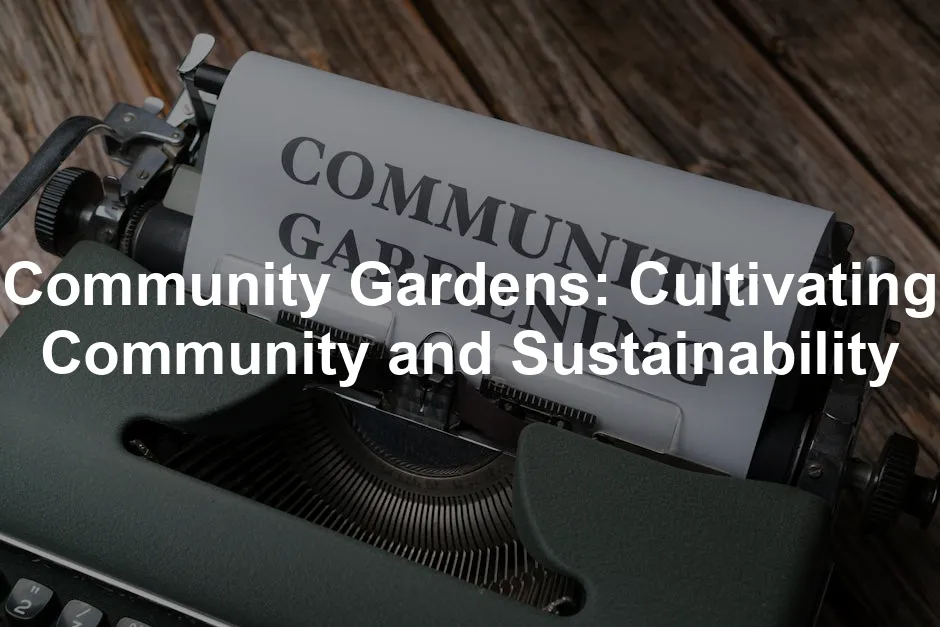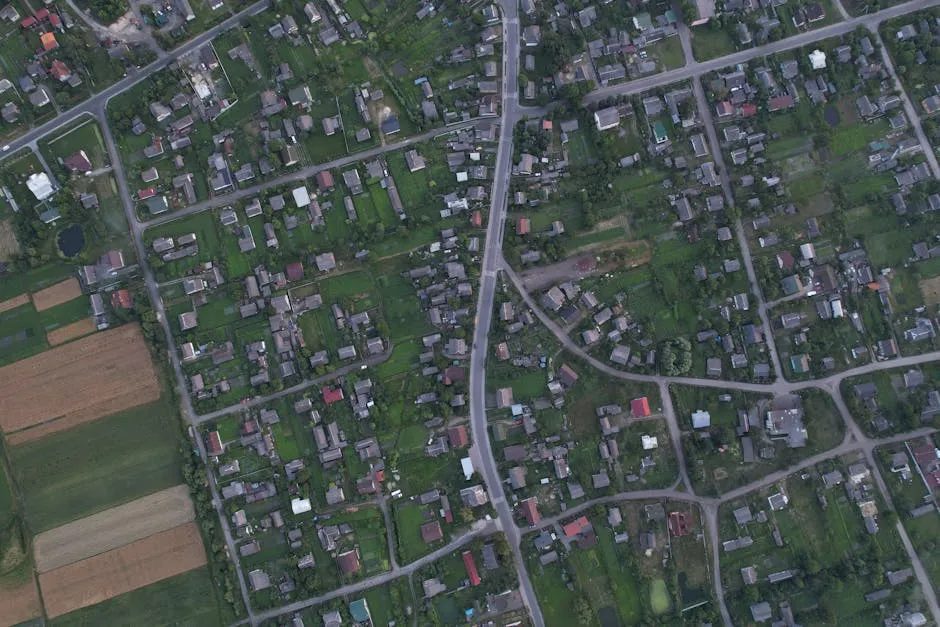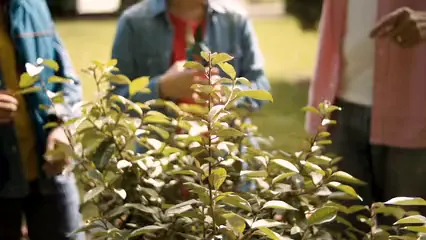

Community Gardens: Cultivating Community and Sustainability
Introduction
Community gardens are shared spaces for growing plants. They foster connections among neighbors and promote sustainability. These gardens provide fresh produce and enhance community well-being. Recently, interest in community gardening has surged, with more people seeking green spaces in urban areas.
Summary and Overview
A community garden is a piece of land cultivated collectively, often featuring individual plots or communal spaces. They have evolved significantly over the years, originating in the late 19th century as a response to food scarcity. Historically, these gardens aimed to provide food for the underprivileged, evolving into spaces that encourage social interaction and environmental awareness.
Today, community gardens offer numerous benefits. Socially, they create bonds among neighbors, fostering a sense of belonging. Environmentally, they enhance local ecosystems by promoting biodiversity and reducing urban heat. Educationally, they serve as hands-on learning environments, teaching sustainable practices and healthy eating. As urban areas grow, the trend towards creating community gardens is rising globally, with cities embracing these green spaces for healthier, more connected communities.

If you’re looking to start your own garden, a great first step is to invest in quality tools. Check out this Garden Tool Set that has everything you need to dig in and get started!
Community gardens can significantly enhance local ecosystems by promoting biodiversity and supporting insect populations.
Why Start a Community Garden?
Benefits of Community Gardens
Starting a community garden brings numerous advantages. First, let’s talk about health. Studies show that households involved in community gardening consume 1.4 more servings of fruits and vegetables daily. This boost in nutrition can significantly enhance your overall health. Plus, spending time in nature can reduce stress and improve mental well-being.
Community gardens also foster social connections. These shared spaces encourage neighbors to bond. People engage in meaningful conversations while planting seeds or harvesting crops. This interaction strengthens community ties and creates a sense of belonging.
Let’s not overlook the environmental impact. Community gardens contribute to urban greening. They provide habitats for local wildlife and increase biodiversity. By transforming vacant lots into green spaces, they help combat urban heat and improve air quality.

Considering these benefits, why not think about starting a community garden in your area? It’s a fantastic way to enhance health, strengthen community bonds, and support the environment.
To get started, you might need some seeds! Check out this amazing Organic Vegetable Seeds Collection to kick off your gardening journey!
Steps to Establish a Community Garden
Finding the perfect spot for a community garden is key. Look for available land in urban spaces, like vacant lots or parks. In Berlin alone, there are over 60 to 100 new neighborhood gardens created in the past decade! This trend highlights the growing community participation in gardening.
Next, engage your community. Gather interest by hosting meetings or using social media. It’s vital to understand what type of garden locals want. Don’t forget legal considerations! Research local regulations and obtain permissions from landowners.
These steps ensure a well-planned garden that meets the community’s needs. For additional guidance, check out resources like the American Community Gardening Association. They offer helpful tips for planning your community garden.

And while you’re planning, consider how to keep your garden healthy! A Soil Moisture Meter can help you know when your plants are thirsty, ensuring they thrive!
Designing the Garden
When designing your garden, consider layout options. Individual plots allow for personal space, while communal areas promote collaboration. Both can coexist, depending on the community’s preferences.
Accessibility is crucial. Ensure pathways are wide enough for wheelchairs or strollers. Incorporate raised beds for easier access, too. Sustainability practices, like using native plants and composting, can enhance your garden’s health.
Studies show gardens that prioritize accessibility and sustainable practices thrive better. Consider using tools like garden planning software to visualize your design. This can help streamline the planning process and encourage community input.

Speaking of sustainability, why not invest in a Compost Bin? It’s a perfect way to recycle organic waste and enrich your garden soil!
Fundraising and Resources
Funding is essential for launching a community garden. Look into grants, crowdfunding, and local sponsorship. Many organizations support community gardening efforts, so don’t hesitate to ask for help.
Initial costs can range from $3,750 to $7,500, so creating a solid budget is critical. List necessary materials, such as soil, seeds, and tools. Engage local businesses for sponsorship or donations.
For more resources, explore platforms that connect community gardens with potential funders. This can help ensure your garden gets off to a great start while fostering community involvement.

Community Engagement in Gardening
Building a Community
Community involvement is the heart of any garden project. When neighbors come together, they create a shared sense of ownership. This connection enhances the commitment to the garden’s success. Organizing events, such as planting days or harvest festivals, encourages participation. Workshops can teach gardening skills while fostering relationships. Engaging diverse groups adds richness to the garden community.
Statistics show that community gardens often see high participation levels. Many gardens report over 50% of their members attending events. This engagement can lead to lasting friendships and collaborative efforts.

So, why not invite local schools, seniors, and cultural groups into the fold? Creating an inclusive environment can strengthen community ties. Everyone has something valuable to contribute, and these interactions can enrich the gardening experience.
Education and Workshops
Educational opportunities abound in community gardens. They serve as vibrant classrooms for schools and local residents. Workshops can cover topics like organic gardening, composting, and cooking with fresh produce. These sessions empower participants with valuable skills and knowledge.
Successful workshops often lead to increased interest in gardening. For example, a garden in Portland saw a 30% rise in participation after hosting a series of educational events. Community members gained confidence and enthusiasm for gardening.
Moreover, children benefit immensely from these programs. Learning about plant growth fosters a love for nature. It also teaches them the importance of sustainability. Consider partnering with local educators to develop tailored programs that engage youth. This collaboration can turn your garden into a hub of learning and excitement for all ages.

And to keep those little hands clean while they garden, don’t forget to grab a pair of Gardening Gloves! They’re essential for keeping hands safe and clean.
Please let us know what you think about our content by leaving a comment down below!
Thank you for reading till here 🙂
As you’re getting into the swing of things, consider a Garden Kneeler and Seat to make gardening more comfortable!

Finally, for those who want to take their gardening to the next level, a Hydroponic Growing System can be a fun and innovative way to grow plants indoors!
All images from Pexels



